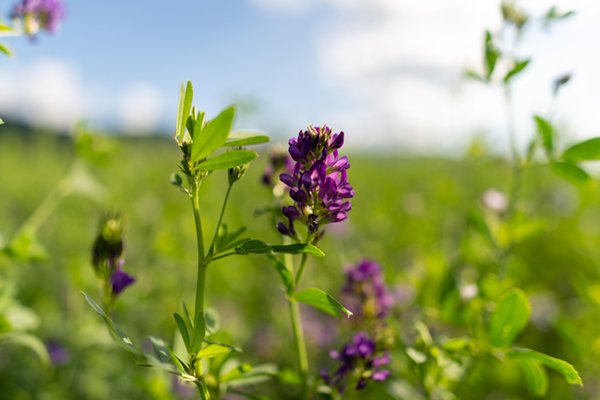
A Horse is a GI Tract on Four Legs
Recently I read an article on a presentation about gastric ulcers in horses given at the Association of Equine Practitioners (AAEP) convention held in December 2021 in Nashville, Tennessee.
Frank Andrews, DVM, MS, Dipl. ACVIM (LAIM), LVMA department head at Louisiana State University’s School of Veterinary Medicine in Baton Rouge presented his assessments of the role gastric ulcers play in poor performance in horses.
“As far as I’m concerned, the horse is basically a GI tract on four legs,” Andrews stated. “They are hindgut fermenters meant to be out on pasture grazing continuously. We’ve taken them out of that environment.”1
Dr. Andrews also pointed out that the prevalence of gastric ulcers, both in the non-glandular and glandular mucosa is very high: from 40% to 93% in performance horses.
The seat of horse health is the GI tract
As many of you know, I am a bit obsessed with the GI tract of horses. From BioStar’s range of probiotics to our range of ulcer support supplements, BioStar is a gut-focused company. So when an esteemed veterinarian like Frank Andrews describes a horse as a GI tract on four legs, I couldn’t agree more, because the seat of health in horses resides in the GI tract.
Gastroesophageal reflux
Dr. Andrews pointed out studies that show that during exercise horses can experience the equivalent to gastroesophageal reflux (heartburn in humans), when acid splashes onto the non-glandular mucosal lining in the upper third portion of the stomach.
A study which looked at gastroesophageal reflux in yearlings concluded that omeprazole (GastroGard or Ulcer Gard) had no detectable effect on gastroesophageal reflux.2
Support for gastroesophageal reflux
Saliva is one of the best buffers of stomach acid. Chewing and swallowing activate saliva production. Alfalfa hay or alfalfa pellets can provide better buffering action than grass hays, due to the high calcium content of alfalfa.
It can be beneficial to feed some alfalfa hay or alfalfa pellets an hour before exercise. You can also feed a cookie supplement like BioStar’s Tum-Ease that will help coat the GI tract and provide stomach acid buffering.
Horses that graze continuously throughout the day tend to have better protection against ulcers.
Management tip from Dr. Andrews: Fat
Dr. Andrews recommends adding oil to feed. He recommends a top-dressed corn oil, which would not be my first choice due to the high omega 6 content and heavy processing of corn oil.
The reason for adding oil is that fats may slow the food transit time out of the stomach. I recommend cold pressed oils such as camelina or flax. There are also benefits to hemp seed oil due to the high GLA content of this oil. GLA is important in the regulation of pro-inflammatory prostaglandins.
Another fat to consider is lecithin. Lecithin is a phospholipid that can create a barrier against stomach acid, and stabilize the cell membranes of the cells that line the horse’s stomach.
Management Tip from Dr. Andrews: Chelated Zinc
According to Dr. Andrews, “if you’re going to use a grain, use one that has a chelated mineral such as zinc or copper. We’ve shown that the chelated zinc is better absorbed and has an effect on inhibiting or decreasing gastric ulcer scores in horses.”
I couldn’t agree more with Dr. Andrews. Chelated minerals have higher bioavailability than non-chelated minerals.
What is a chelated mineral?
A chelated mineral is a mineral bound to an organic molecule such as amino acids. Plants use chelation to bind minerals from the soil and make them more bioavailable to the plant.
But not all chelated minerals are the same. Mineral gluconates such as zinc gluconate have a 10-40% bioavailability, while amino acid chelates, proteinates, and polysaccharide chelates provide a 50-70% bioavailability.
Differences among chelates
Mineral proteinates and amino acid chelates are very similar, but the labeling definitions of chelates are different for humans and horses.
In animal nutrition labeling, an amino acid chelated mineral has 2 bonds, and a mineral proteinate has 8 bonds. Two bonds may be weakened and separated by the acid in the stomach, so the more bonds around the mineral, the better the absorption.
So, when reading labels for your horse, look for proteinated minerals because it has more bonds.
In human nutrition labeling, an amino acid chelated mineral has 8 bonds and a mineral proteinate has 2 bonds – the exact opposite of animal nutrition labeling.
When reading labels for yourself and your family, look for amino acid chelated minerals.
Zinc, gastroesophageal reflux, and ulcers
As long ago as 1995, researchers began looking at zinc deficiency on gastric ulcer healing in rats. While the study showed that zinc deficiency did not affect the formation of ulcers, it reduced cell proliferation and delayed ulcer healing.3
Zinc has long been associated with wound healing. Considering that an ulcer is a type of wound of the mucosa, it is sensible to make sure your horse is getting enough bioavailable zinc. If you are feeding BioStar’s Optimum 2.0, Senior, JS, Defense or GI, your horse is getting the most bioavailable zinc in the form of proteinate.
Preventing and managing ulcers
Preventing ulcers and managing ulcer horses and ulcer-sensitive horses takes a multi-pronged approach: lifestyle, diet, supplements, stress assessment, and meds as needed.
Ways to help prevent and manage gastric ulcers:
- Adding a healthy oil to the feed
- Giving the horse more grazing/pasture time
- Ensuring zinc levels are not deficient
- Making sure the horse gets a buffering agent like alfalfa hay or pellets before riding
We cannot underestimate the complex role of the GI tract in the health of our horses. Fortunately, we horse owners have access to a variety of methods and ways to keep the equine gut happy and healthy.
1 – thehorse.com/1109363/gastric-ulcers-as-a-cause-of-poor-performance-in-horses/
2 – pubmed.ncbi.nlm.nih.gov/27383615/
3 – pubmed.ncbi.nlm.nih.gov/7781457/










